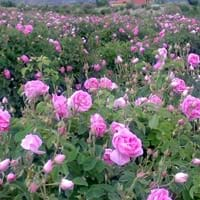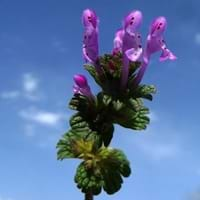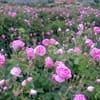Life Span
Perennial
Annual
Type
Flowering Plants, Ornamental Plants, Perennial
Herbs
Origin
Hybrid origin
Eastern Europe, Southern Europe, Mediterranean, Northern Africa, Central Asia, Western Asia
Types
Summer Damasks, Autumn Damasks
Not Available
Number of Varieties
Not Available
Habitat
gardens
Cultivated Beds
USDA Hardiness Zone
Not Available
Not Available
AHS Heat Zone
Not Available
12 - 1
Sunset Zone
Not Available
Not Available
Habit
Clump-Forming
Prostrate/Trailing
Flower Color
Pink
Hot Pink, Fuchsia, Violet
Flower Color Modifier
Bicolor
Bicolor
Fruit Color
Non Fruiting Plant
Not Available
Leaf Color in Spring
Green, Gray Green
Green, Purple, Gray Green
Leaf Color in Summer
Dark Green, Green
Green, Purple, Gray Green
Leaf Color in Fall
Green, Gray Green
Green, Purple, Gray Green
Leaf Color in Winter
Dark Green, Green
Light Green
Plant Season
Spring, Summer, Fall
Spring, Fall, Winter
Sunlight
Full Sun, Partial Sun
Full Sun, Partial Sun, Partial shade, Full Shade
Type of Soil
Loam, Sand
Clay, Loam, Sand
The pH of Soil
Acidic, Neutral
Acidic, Neutral, Alkaline
Soil Drainage
Well drained
Average
Bloom Time
Spring, Late Spring, Early Summer, Summer, Late Summer, Early Fall, Fall
Early Spring, Spring, Late Spring, Early Summer, Fall, Late Fall, Early Winter
Repeat Bloomer
Not Available
Yes
Tolerances
Drought
Not Available
Where to Plant?
Container, Ground, Pot
Ground
How to Plant?
Cuttings
Divison, From Rhizomes, Layering, Seedlings
Plant Maintenance
Medium
Low
Watering Requirements
Average Water Needs
Water occasionally
In Summer
Lots of watering
Lots of watering
In Spring
Moderate
Moderate
In Winter
Average Water
Average Water
Soil pH
Acidic, Neutral
Alkaline, Neutral, Slightly Acidic, Slightly Alkaline
Soil Drainage Capacity
Well drained
Dry
Sun Exposure
Full Sun, Partial Sun
Full Sun, Partial shade
Pruning
Remove damaged leaves, Remove dead branches, Remove dead leaves
Remove damaged leaves, Remove dead branches, Remove dead leaves
Fertilizers
All-Purpose Liquid Fertilizer
Not Available
Pests and Diseases
Beetles, Black Spot, Caterpillars, Downy mildew, Mosaic viruses, Powdery mildew, Rust, Scale insects, Thripes
Not Available
Plant Tolerance
Drought
Not Available
Flower Petal Number
Double
Single
Edible Fruit
Not Available
No
Fragrant Bark/Stem
No
Yes
Foliage Texture
Medium
Medium
Foliage Sheen
Glossy
Matte
Invasive
Not Available
Yes
Self-Sowing
Not Available
Yes
Attracts
Birds, Butterflies
Bees, pollinators
Allergy
Rash
Anti-inflammatory, Antimicrobial, Antioxidants, Flavonoids
Aesthetic Uses
Showy Purposes
Beautification, Cottage Garden, Showy Purposes
Beauty Benefits
Not Available
Not Available
Environmental Uses
Air purification
Not Available
Medicinal Uses
Not Available
Antirheumatic, Diaphoretic, Febrifuge, Laxative
Part of Plant Used
Flowers
Flowers, Leaves, Stem
Other Uses
Oil is used in perfume, soaps, creams, etc.
Used As Food
Used As Indoor Plant
Yes
No
Used As Outdoor Plant
Yes
Yes
Garden Design
Container, Cutflower, Feature Plant, Foundation, Mixed Border, Topiary / Bonsai / Espalier
Edible
Botanical Name
Rosa × damascena
LAMIUM amplexicaule
Common Name
Damask rose, rose of castile
Henbit, Henbit Deadnettle
In Hindi
जामदानी गुलाब
henbit deadnettle
In German
Damaszener-Rosen
henbit deadnettle
In French
Le rosier de Damas
henbit deadnettle
In Spanish
Rosa de Damasco, Rosa de Castilla
deadnettle henbit
In Greek
δαμασκηνό τριαντάφυλλο
αυλακόχορτου deadnettle
In Portuguese
rosa damascena
henbit deadnettle
In Polish
Róża damasceńska
Henbit jasnota
In Latin
surrexit Damascum
henbit deadnettle
Phylum
Magnoliophyta
Magnoliophyta
Class
Magnoliopsida
Magnoliopsida
Family
Rosaceae
Lamiaceae
Clade
Not Available
Angiosperms, Asterids, Eudicots
Tribe
Not Available
Not Available
Subfamily
Not Available
Not Available
Number of Species
Not Available
Season and Care of Damask Rose and Henbit Deadnettle
Season and care of Damask Rose and Henbit Deadnettle is important to know. While considering everything about Damask Rose and Henbit Deadnettle Care, growing season is an essential factor. Damask Rose season is Spring, Summer and Fall and Henbit Deadnettle season is Spring, Summer and Fall. The type of soil for Damask Rose is Loam, Sand and for Henbit Deadnettle is Clay, Loam, Sand while the PH of soil for Damask Rose is Acidic, Neutral and for Henbit Deadnettle is Acidic, Neutral, Alkaline.
Damask Rose and Henbit Deadnettle Physical Information
Damask Rose and Henbit Deadnettle physical information is very important for comparison. Damask Rose height is 200.00 cm and width 200.00 cm whereas Henbit Deadnettle height is 7.60 cm and width 30.50 cm. The color specification of Damask Rose and Henbit Deadnettle are as follows:
Damask Rose flower color: Pink
Damask Rose leaf color: Green and Gray Green
Henbit Deadnettle flower color: Hot Pink, Fuchsia and Violet
- Henbit Deadnettle leaf color: Green, Purple and Gray Green
Care of Damask Rose and Henbit Deadnettle
Care of Damask Rose and Henbit Deadnettle include pruning, fertilizers, watering etc. Damask Rose pruning is done Remove damaged leaves, Remove dead branches and Remove dead leaves and Henbit Deadnettle pruning is done Remove damaged leaves, Remove dead branches and Remove dead leaves. In summer Damask Rose needs Lots of watering and in winter, it needs Average Water. Whereas, in summer Henbit Deadnettle needs Lots of watering and in winter, it needs Average Water.





